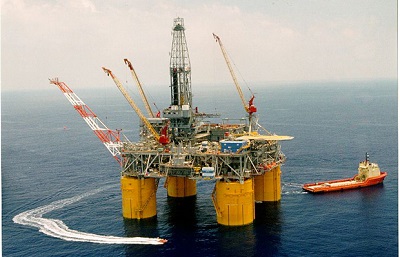
The Ghana National Petroleum Corporation (GNPC) with the consent of the Ministry of Energy has embarked on a two-phased programme to decommission the Saltpond Oil Field, the premier oil producing field in Ghana.
According to Mr John Peter Amewu, Minister of Energy, the first phase of bringing down the rig involved preparation of a comprehensive decommissing plan while the second phase would actually kick-start the decommissioning operation.
Mr Amewu disclosed this on the floor of Parliament in response to a question, by Mr Ekow Hayford, Member of Parliament for Mfantseman who wanted to know the status of the Saltpond Offshore Rig decommissioning project.
Operation of the oil field was halted in June 10, 2010 by the GNPC when it started incurring operational cost from a field which was producing next to nothing from its archive two wells out of six wells originally sunk when the field was operating in the 70s.
The Public Interest and Accountability Committee (PIAC) which has oversight responsibility on the prudent use of oil revenues then called for immediate closure since a lot of monies were being spent on skeletal staff maintaining the rig which had become a death-trap.
Mr Amewu however, said decommissioning a rig comes with careful planning thus; the Phase-1 of the project had been awarded through a competitive process to a consulting consortium with PAP Energy Limited-Oxand-Dietsmann-Zeal adding that the consulting service agreement was signed in March, 2018.
Mr Amewu said the decommissioning plan had been prepared since October 2018 and submitted to the Ministry in July 2019 and was currently undergoing review prior to approval.
He said after the review and the eventual approval of the Decommissioning Plan, the Ministry would make publication in the dailies to invite qualified applicants to submit tenders for the decommissioning.
Mr Amewu said the Phase II which currently was outstanding consists of three stages which were, well plug and abandoning, ending with the removal of conductor pipes, removing and dismantling the topside of Mr Louie” and waste management and site remediation.
Saltpond Oil Field which was now being put to disuse was discovered in 1970 and was operated by the Signal-Amoco Consortium which relinquished the concession field in 1976 to offshore Hydrocarbon Limited citing the field as non-commercial.
Offshore Hydrocarbon later entered into a development farmout with Agri-Petco of U.S.A which between 1977 to 1978 drilled six appraisals wells from a centrally located jack up rig called “Mr Louie.”
After the drilling, the jack up was converted into a production unit and the field was on-stream in October 1978.
In 1984, the field was reassigned to Primary Fuel Incorporated which after operating for a year handed it over to GNPC in July 1985.
Between 1978 to 1985 the maximum cut production was 4,800 barrels a day, dwindling up to 580 barrels per day when operations were halted at a time crude prices on the world market was all time low.
When oil prices began to appreciate in around 2000, GNPC on January 18 entered into agreement with Lushan International of Houston, Texas for the rehabilitation of the field. Lushan International also contracted Eternit Universal Limited of Nigeria for the financing of the rehabilitation works.
In August 2000, rehabilitation works commenced with the repair of “Mr Louie” platform. When the work over was completed, only two wells were able to produce between 480-600 barrels per day.
In 2002, government renegotiated the deal between GNPC on one hand and Lushan-Eternit Energy Ltd which allowed GNPC to take a share of 45 per cent while Lushan-Eternit took the rest of the shares under a new entity Saltpond Offshore Producing Company Limited (SOPCL),in 2004.
In June 2010, GNPC announced that it was pulling out of the SOPCL leasing contract since the company was unable to pay its outstanding bill which thereafter called for the decommissioning of the rig.
BY LAWRENCE MARKWEI





